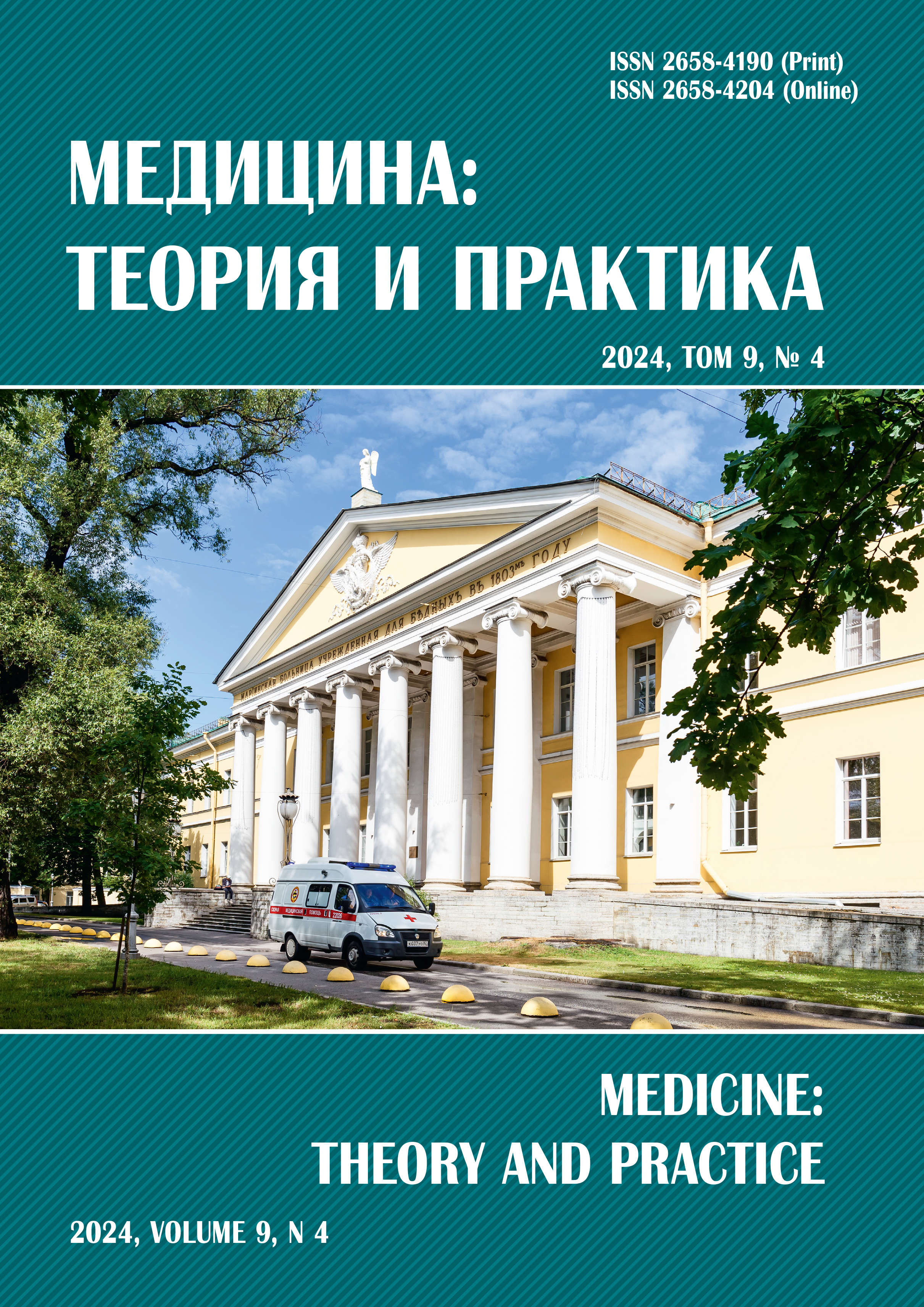EXPERIENCE OF MANAGING PATIENTS WITH POSTPARTUM ENDOMETRITIS IN THE MARIINSKY HOSPITAL
Abstract
Postpartum endometritis is an important purulent-inflammatory disease, is one of the causes of maternal mortality. We examined and treated 155 patients with postpartum endometritis. Patients with postpartum endometritis are younger, have a lower body mass index, and have a higher frequency of concomitant pathological conditions, primarily diseases of the urinary system and ENT organs, than the women in the control group. The main microorganisms that cause the disease are representatives of Escherichia coli, which are most often found both as a single pathogen and in biocenoses. A decrease in the content of TNFα and IL-10 in the blood serum indicates a decrease in the activity of the inflammatory. The necrectomy method we propose using ultrasound scanning increases the sensitivity of microorganisms to antibiotics. This significantly increases the effectiveness and reduces the duration of treatment for patients with postpartum endometritis. The positive effect of ultrasound scanning is enhanced by using a solution of furacilin in a dilution of 1:5000 as a liquid for cavitation.
References
Голубкова А.А., Смирнова С.С., Манькова О.А., Жилина Е.В. Факторы риска развития послеродового эндометрита в современном стационаре. Медицинский альманах. 2015;5:68–71.
Морозова Н.А., Морозова Н.И. Послеродовые гнойно-воспалительные заболевания (этиопатогенез, факторы риска, диагностика). Медико-социальные проблемы семьи. 2016;2:72–79.
Адамян Л.В., Кан Н.Е., Ломова Н.А. и др. Послеродовой эндометрит. Клинические рекомендации. М.: МЗ РФ; 2016.
Filetici N., Van de Velde M., Roofthooft E., Devroe S. Maternal sepsis. Best Pract Res Clin Anaesthesiol. 2022;36:65–177. DOI: 10.1016/j.bpa.2022.03.003.
French L.M., Smaill F.M. Antibiotic regimens for endometritis after delivery. The Cochrane Database of Systematic Reviews. 2007;1. DOI: 10.1002/14651858.CD001067.
Артемук Н.В., Белокриницкая Т.Е., Заболотских И.Б. и др. Септический шок в акушерстве. Клинические рекомендации МЗ РФ. 2022.
Кан Н.Е., Балушкина А.А., Вересова А.А., Закревская И.В. Профилактика послеоперационных осложнений при абдоминальном родоразрешении. Медицинский совет. 2014;4:96–99.
Munnur U., Bandi V., Guntupalli K.K. Management principles of the critically ill obstetric patient. Clin Chest Med. 2011;32:53–60. DOI: 10.1016/j.ccm.2010.10.003.
Томаева К.Г., Гайдуков С.Н., Комиссарова Е.Н. Частота встречаемости послеродового эндометрита у женщин с разными соматотипами. Вестник новых медицинских технологий. 2019;3:9–13. DOI: 10.24411/1609-2163-2019-16400.
Воронина Е.В., Лобанова Н.В., Яхин И.Р. и др. Роль фактора некроза опухолей-альфа в иммунопатогенезе заболеваний различной этиологии и его значимость в развитии антицитокиновой терапии моноклональными антителами. Медицинская иммунология. 2018;6:797–806. DOI: 10.15789/1563-0625-2018-6-797-806.
Насонов Е.Л, Елисеев М.С. Роль интерлейкина 1 в развитии заболеваний человека. Научно-практическая ревматология. 2016;1:60–77.
Прищепенко В.А. Уровень интерлейкина-10 у пациентов с гепатитом и циррозом печени алкогольной этиологии. Доказательная гастроэнтерология. 2023;1:29–36. DOI: 10.17116/dokgastro20231201129.
Алиева А.М., Теплова Н.В., Эттингер О.А. и др. Роль интерлейкина 12 в развитии сердечно-сосудистых заболеваний. Терапия. 2022;6:64–75. DOI: 10.18565/therapy.2022.6.64-75.
Насонов Е.Л. Новые возможности фармакотерапии иммуновоспалительных ревматических заболеваний: фокус на ингибиторы интерлейкина-17. Научно-практическая ревматология. 2017;1:68–86.
Сужаева Л.В., Егорова С.А. Резистентность к антимикробным препаратам штаммов Еscherichia coli, выделенных из микробиоты кишечника детей.
Клиническая лабораторная диагностика. 2020;10:638–644. DOI: 10.18821/0869-2084-2020-65-10-638-644.
Raeispour M., Ranjbar R. Antibiotic resistance, virulence factors and genotyping of Uropathogenic Escherichia coli. Antimicrob. Resist. Infect. Control. 2018;3:118. DOI: 10.1186/s13756-018-0411-4.



